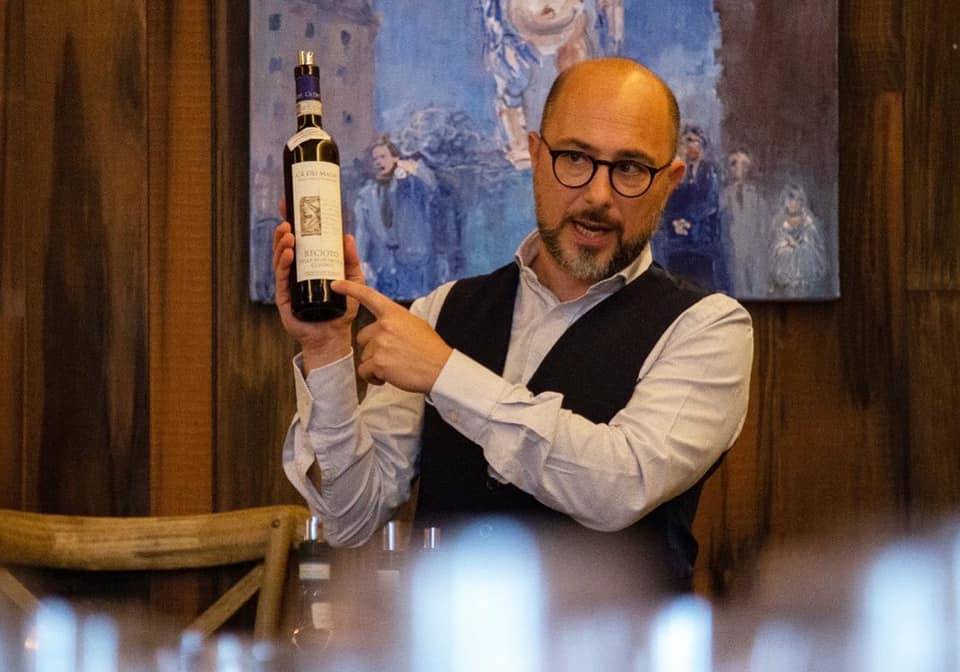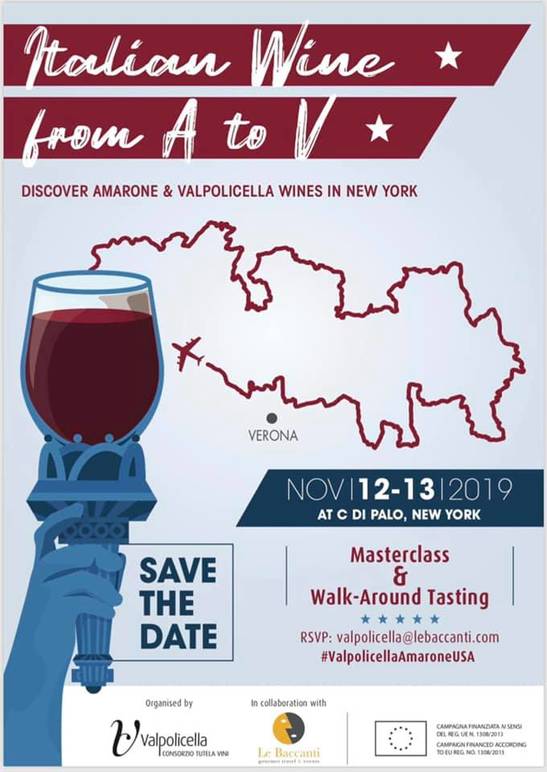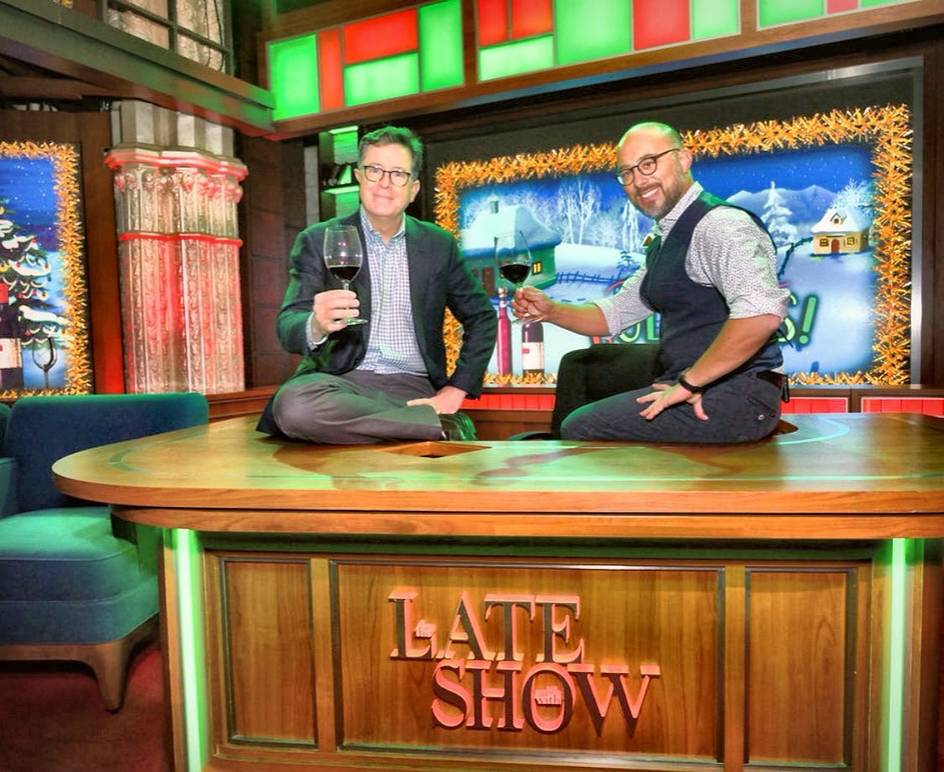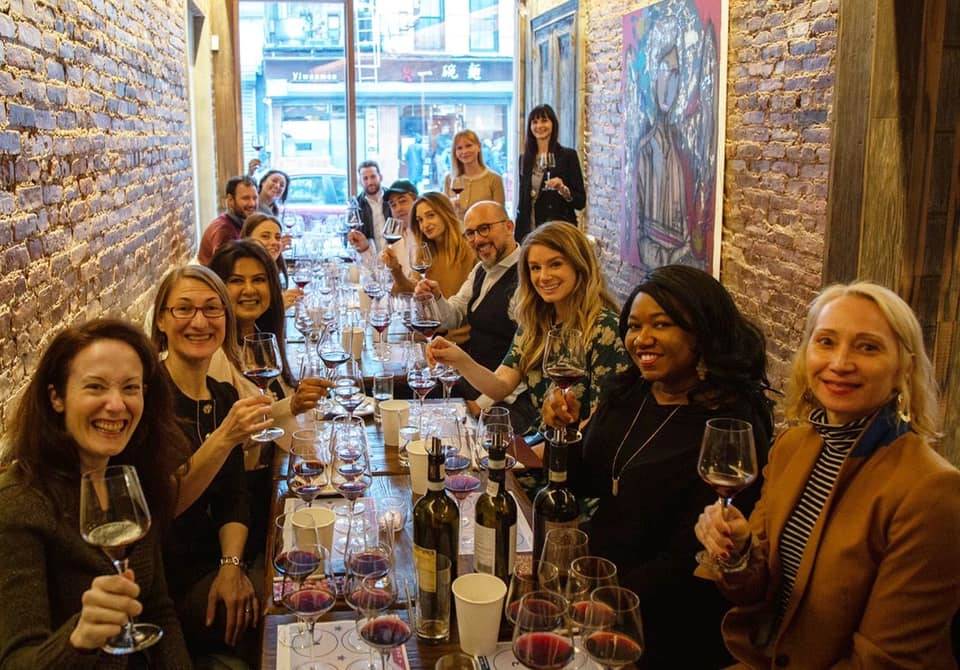A Wine Journey from New York to Valpolicella
On a particularly frigid November morning, Consorzio per la tutela vini Valpolicella welcomed a select group of wine writers and conoisseurs inside the newly opened Di Palo Wine Bar to discover Valpolicella wines, produced in the province of Verona, Italy, during an event organized by Forwinesake.
The event consisted in a masterclass held by Filippo Bartolotta, an experienced sommelier from Florence, also known as the “sommelier of the stars,” who specializes in introducing people - including celebrities such as Emma Thompson and the Obamas - to the incredible world of Italian food and wine. He conducts various lectures, masterclasses, and training programs across Italy and the world.
On this occasion, he discussed the still little known wines produced in the geographically designated area of Valpolicella, located in the province of Verona, in Northern Italy. With incredible passion and an abundance of hand gestures, he began by describing the territory, which he called an “amphitheatre” surrounded by Lake Garda on one side, the Alps on another, and finally the Adriatic Sea. This characteristic makes this rather small area truly unique in terms of climate, altitude and soil, all fundamental aspects of winemaking.
We then learned that inside the Valpolicella region there are two subregions, Valpolicella Classica, which includes the valleys of Fumane, Marano and Negrar as well as the areas around Sant’Ambrogio di Valpolicella and San Pietro in Cariano, and Valpolicella Valpantena, which is centered around the Valpantena valley.
Bartolotta then went on to explain how when it comes to Valpolicella wines, the process is of the utmost importance, more than grape variety and even soil. The grapes - usually a blend of Corvina, Corvinella, Rondinone, Molinara and other grape varieties - are put out to dry for 100 days after they are harvested. This process, which dates back to Roman times, makes the sugar levels rise significantly.
Spit cups in hand, we began our journey through Valpolicella as our sommelier walked us through the tasting of six wines: Corte Cavedini, Valpolicella DOC 2018; Albino Armani, Valpolicella DOC Classico Superiore 2017 Egle; Secondo Marco, Amarone della Valpolicella DOCG Classico 2011; Villa San Carlo, Amarone Della Valpolicella DOCG 2012; a 2015 Ripasso from Boscaini Carlo; and Ca’ dei Maghi, Recioto Della Valpolicella DOCG Classico, 2011.
They tasted unique, complex, each bursting with several distinct flavors. The first, as usual, was lighter, smoother, extremly drinkable, while the second one was already noticeably richer, darker. The taste was more acidic with hints of cherries, citrus, but also tobacco. You could also taste the minerality, present in most Valpolicella wines due to the volcanic components present in the soil.
Then we got to the Amaroni, which are among the most renowned Valpolicella wines. They are strong, rich wines, again herby and/or fuity but also mineral, almost salty. For this reason our guide suggests pairing them with slow cooked meat or dry cheese (though the flavors vary with each wine, for example the first Amarone was much more mineral than the second, which left a more pronounced fruity, sugary taste in the mouth and teeth.)
The fifth wine was a Ripasso, which means that it is produced by remixing matured Amarone wine with newer and lighter wine. “Some consider this cheating,” Bartolotta says, then explaining that this is actually a procedure that dates back to Ancient times.
The name Amarone roughly translates to “very bitter” but that is only because it is an evolution of Recioto, a sweet wine and therefore the sixth and final one of our tasting. “Recioto is what put Valpolicella on the map,” Bartolotto explains, adding that it is however often wrongfully dismissed nowadays, since the consensus is that people today tend to drink less sweet wine. I am personally not a fan of sweet wines, but I have to say I surprised myself with how much I enjoyed the Recioto, which felt velvety, fruity, floral, and also somewhat minty, giving it a nicer, fresher after-taste.
After the class, we were invited to linger in the stylish and cozy Di Palo Wine Bar - the latest venture by the Little Italy staple Di Palo's Fine Foods store, known by all New Yorkers as the "purveyor of the city's best mozarella" - to try more Valpolicella wines, over 20 from 10 different producers across the region, this time served alongside a delicious mushroom risotto from Risotteria Melotti and of course some mouthwatering salumi and cheeses from Di Palo’s.
Overall, a fascinating learning experience, a glimpse into the wonderful world of Italian wine, a quick trip across the unique region of Valpolicella, all rendered easily accessible in the heart of New York City, inside this Italian pocket, one of the few still left in Little Italy.













































i-Italy
Facebook
Google+
This work may not be reproduced, in whole or in part, without prior written permission.
Questo lavoro non può essere riprodotto, in tutto o in parte, senza permesso scritto.